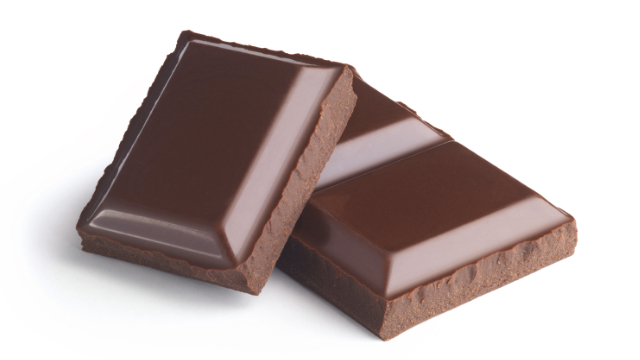News
Study Identifies Two Metals In Many Popular Chocolate Brands

If you have a tough time ending your day without reaching for a piece of chocolate—or four—to satisfy your sweet tooth and give you that blissful boost that few other foods can provide, you might want to up. Although dark chocolate certainly tastes good and may provide several health benefits due to its high concentration of antioxidants—which can improve heart health and other conditions—a recent study has shown that several dark chocolate bars contain lead and cadmium, two heavy metals that have been linked to a variety of health conditions.
Chocolate makers are aware of this issue for some time and have been trying to find ways to reduce the levels of these metals for some time, but it’s been unclear whether they’ve succeeded. Therefore, scientists at Consumer Reports performed a study in which they measured the amounts of heavy metals in 28 dark chocolate bars, and the results were less than encouraging.
The scientists tested various brands of dark chocolate bars, including lesser–known brands as well as popular brands like Dove and Ghirardelli. They found lead and cadmium to be present in all 28 bars, and for 23 of these bars, eating just one ounce of chocolate per day would put an adult over the level that experts say can be harmful to one’s health. Consistent, long–term exposure to heavy metals like lead and cadmium can lead to numerous health conditions, such as nervous system issues, hypertension, immune system suppression, and kidney damage. The risk for health problems is highest in pregnant women and young children, as exposure to these metals can affect brain development and cause developmental delays.
Lead and cadmium? How did they get in my chocolate?
As you’re processing the—probable—shock of reading that your favorite dark chocolate bar likely contains unhealthy levels of lead or cadmium, your next question might be: why are these metals found in chocolate?
Chocolate is made from the cacao bean, which is composed of cocoa solids and cocoa butter, which are together called cacao or cocoa. Dark chocolates are generally at least 65% cacao by weight, which means they have high concentrations of cocoa solids. These cocoa solids are where the nutritional value of dark chocolate is derived, since they are packed with antioxidants called flavanols that are associated with better blood vessel function and lower cholesterol and inflammation. But the cocoa solids are also where heavy metals like lead and cadmium are found, which is why levels are so high in dark chocolate.
These two metals get into chocolate through different mechanisms. Cacao plants take up cadmium from the soil and the metal accumulates in the cacao beans as the tree grows, while lead appears to enter cacao after the beans are removed from pods and dried out, during which time lead–filled dust and dirt accumulates on the outer shells of the beans. But because of these different entry methods, the techniques used to reduce lead and cadmium levels are also different. For lead, changes are needed in harvesting and manufacturing practices to minimize the amount of lead–contaminated dust that lands on gets into the beans as they’re processed, while reducing cadmium levels is more difficult and may require carefully breeding or genetically engineering plants to take up fewer heavy metals, which will take much longer. Chocolate producers can also survey the areas in which they grow cacao and favor beans grown from regions with lower levels, or blend beans from high–level areas with lower–level areas.
And for you, the consumer, here are some tips to help you navigate this new bombshell on your favorite treat:
- Choose dark chocolates with the lowest levels of heavy metals (see the Consumer Reports article for more details)
- Limit your chocolate intake to only a few days per week, at most
- Try dark chocolates with lower cacao percentages (eg, 65–70%), and consider alternating it with milk chocolate (but remember that milk chocolate is higher in sugar)
- Don’t give kids much dark chocolate
- Eat a well–rounded diet that’s high in whole grains and fruits and vegetables, and low in processed foods and those that are high in refined carbs and sugars
The long and short here: there’s no need to ditch your chocolate habit altogether because of these findings, but you should reevaluate your chocolate intake and make necessary changes to ensure that you’re limiting the amount of lead and cadmium you’re consuming.
Disclaimer:
The information in the articles, posts, and newsfeed is intended for informational and educational purposes only and in no way should be taken to be the provision or practice of physical therapy, medical, or professional healthcare advice or services. The information should not be considered complete or exhaustive and should not be used for diagnostic or treatment purposes without first consulting with your physical therapist, occupational therapist, physician or other healthcare provider. The owners of this website accept no responsibility for the misuse of information contained within this website.
